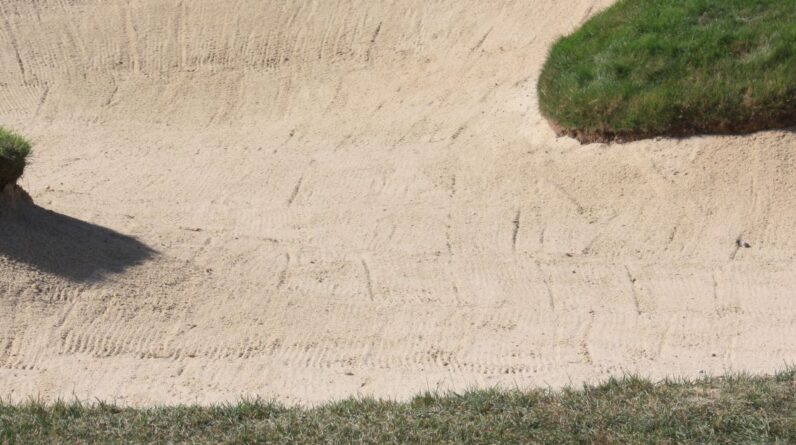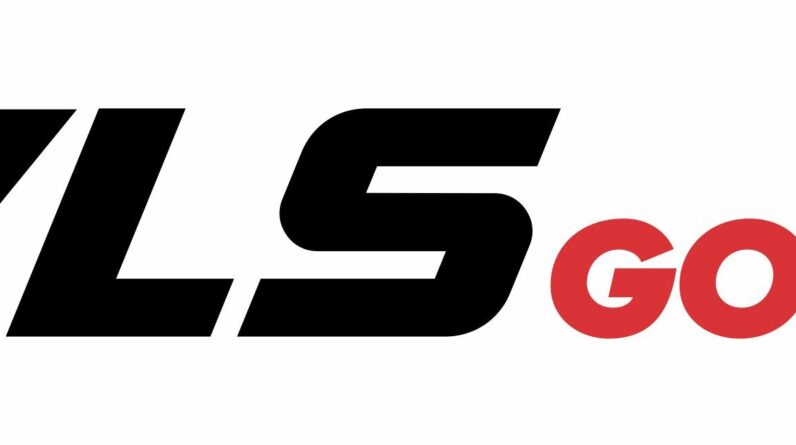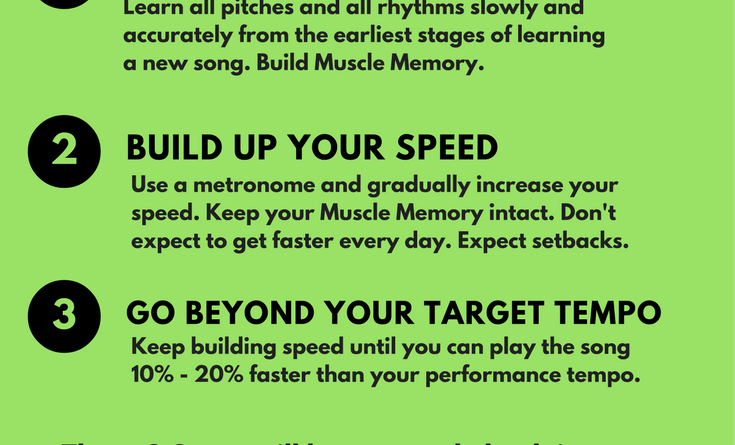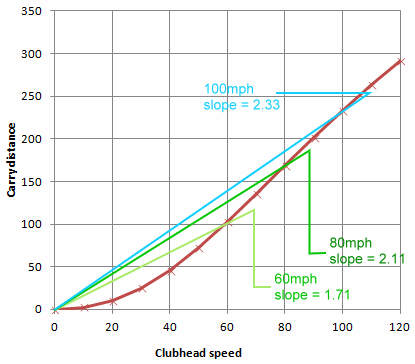Imagine stepping up to the tee box, ready to take your shot. But wait, the position of the tee box has shifted, throwing off your usual routine. How do you adapt and choose the right club for an accurate shot? In this article, we will explore some strategies to help you navigate the challenges of different tee box positions and make precise club selections. Whether it’s a forward or back tee, a dogleg, or an elevated tee, you’ll be equipped with the knowledge to confidently select the perfect club and conquer any tee box position that comes your way. Get ready to take your game to new heights!

Understanding Different Tee Box Positions
When it comes to golf, the tee box is where the game begins. However, not all tee boxes are created equal. Understanding the different tee box positions is crucial for determining the best club selection and ultimately improving your overall game. There are several factors that come into play when determining tee box positions, such as the layout of the course, hazards, yardage, and your own comfort zone. By evaluating and adapting to these different tee box positions, you can ensure more accurate club selection and maximize your chances of success on the course.
Determining Factors for Tee Box Positions
There are several factors that determine tee box positions on a golf course. The course designer carefully considers these factors to create a challenging but fair playing experience for golfers of all skill levels. Some of the determining factors for tee box positions include the length and difficulty of the hole, the course layout, the presence of hazards, and the overall yardage of the course. By understanding these factors, you can gain insight into the intended difficulty and strategy for each hole.
Common Types of Tee Box Positions
On most golf courses, you will find three common types of tee box positions: forward, middle, and back. The forward tee box, also known as the ladies’ tee or the red tee, is typically the shortest in distance and offers the least amount of challenge. The middle tee box, also known as the regular or white tee, is the average distance and difficulty level for most golfers. The back tee box, also known as the championship or black tee, is the longest in distance and provides the greatest challenge. Understanding the differences between these tee box positions is key to making informed club selections.
Impact of Tee Box Positions on Club Selection
The tee box position you choose can have a significant impact on your club selection. When playing from the forward tee box, you will generally use shorter clubs such as irons or hybrids for your tee shots. This is because the shorter distance allows you to focus on accuracy rather than distance. From the middle tee box, you may use a combination of longer irons and fairway woods for optimal distance and control. When playing from the back tee box, you will likely need to use your driver or other long-distance clubs to reach the fairway. By adapting your club selection to the tee box position, you can give yourself the best chance for success on each hole.
Evaluating Course Layout and Hazards
Understanding the layout of the golf course is essential for strategizing your tee box selection. Golf courses present various challenges and obstacles that can greatly impact your club selection and approach to each hole. Analyzing the course map will give you a sense of the hole’s layout, including the position of hazards, such as sand traps, water features, and out-of-bounds areas. Identifying these hazards and obstacles before your tee shot allows you to make more informed decisions on which club to use and how to best navigate the hole.
Analyzing the Course Map
Before teeing off, take a few moments to study the course map. This will give you a bird’s-eye view of each hole, highlighting the layout, doglegs, and hazards. Understanding the course map can help you visualize your tee shot and determine the optimal line of play. Pay close attention to the position of hazards and how they may come into play from different tee box positions. Having a clear mental image of the course layout will allow you to make more accurate club selections and increase your chances of hitting the fairway.
Identifying Hazards and Obstacles
Once you’ve analyzed the course map, it’s time to identify the hazards and obstacles that may affect your tee shot. These hazards can vary from hole to hole and may include bunkers, water hazards, trees, or out-of-bounds areas. By recognizing the potential challenges posed by these hazards, you can make smarter club selections and adjust your shot strategy accordingly. For example, if there is a fairway bunker positioned on the left side of the fairway, you may want to choose a club that can keep your tee shot safely on the right side. Identifying and preparing for hazards in advance can help you avoid unnecessary penalty shots and improve your overall score.
Assessing the Yardage and Par of the Hole
The yardage and par of a hole are critical factors when determining how to approach your tee shot. The yardage refers to the total distance from the tee box to the green, while the par indicates the number of strokes a skilled golfer is expected to require to complete the hole. Assessing the yardage and par will help you make informed decisions regarding club selection and shot strategy.
Measuring Total Yardage
Once you have assessed the yardage of a hole, you can better understand the distance you need to cover with your tee shot. This will guide your club selection, as you’ll want to choose a club that can comfortably carry the necessary distance, taking into account any hazards or obstacles. It’s important to remember that the yardage displayed on the scorecard may not always be accurate due to course conditions or slight variations in tee box placements. To ensure accurate club selection, it’s prudent to use a rangefinder or consult the distance markers on the course itself.
Considering the Par of the Hole
The par of a hole is a key consideration when strategizing your tee shot. Each hole on the golf course is assigned a par value, typically ranging from three to five strokes. By understanding the par of the hole, you can gauge the level of difficulty and set realistic expectations for your game. For shorter par-three holes, you may need to focus on accuracy and consider using shorter clubs off the tee. Longer par-five holes may offer opportunities for distance, but also require careful consideration of hazards and potential lay-up strategies. Factoring in the par of the hole will help you select the appropriate club and develop a game plan for successfully navigating the fairway.
Determining Your Comfort Zone
Your personal comfort zone plays a significant role in tee box selection and club choice. Every golfer has their own unique set of skills and abilities, which should be taken into account when assessing tee box positions. By understanding your distance abilities and considering your current skill level, you can make more informed decisions that will promote consistency and success on the course.
Understanding Your Distance Abilities
One of the most critical factors in determining your comfort zone is understanding your distance abilities. This refers to how far you can consistently hit each club in your bag. By knowing your average distances, you can select the appropriate tee box position that aligns with your capabilities. It’s important to be realistic about your skill level and choose a tee box that provides a challenge without overwhelming your abilities. Overestimating your distance abilities can result in frustration and suboptimal club selections, so it’s crucial to be honest with yourself when gauging your comfort zone.
Factoring in Current Skill Level
In addition to understanding your distance capabilities, it’s essential to factor in your current skill level when determining your comfort zone. As a golfer, you should continuously strive for improvement, but it’s important to recognize your current abilities and limitations. If you’re a beginner or have a higher handicap, opting for a forward tee box can provide a more enjoyable experience and allow you to focus on developing your skills. As your game progresses, you can gradually challenge yourself with more difficult tee box positions. By aligning your skill level with the tee box difficulty, you can ensure a more enjoyable and rewarding round of golf.
Selecting the Right Tee Box
Now that you have evaluated the course layout, considered the yardage and par, and determined your comfort zone, it’s time to select the right tee box for your round. Choosing the appropriate tee box can significantly impact your overall experience and performance on the course. By matching the tee box difficulty to your skill level, considering your course handicap, and taking into account your playing partners’ abilities, you can make a selection that optimizes your chances of success.
Matching Tee Box Difficulty to Skill Level
The fundamental principle in selecting the right tee box is to match the difficulty level to your skill level. Opting for a tee box that is too challenging can lead to frustration and a less enjoyable round. Conversely, playing from a tee box that is too easy may not provide the necessary challenge to improve your skills. By honestly assessing your abilities and considering your comfort zone, you can make an informed decision on which tee box provides the appropriate level of difficulty for your game.
Considering Course Handicap
Another important factor to consider when selecting the right tee box is your course handicap. The course handicap is a numerical representation of your playing ability and is used to adjust your score relative to the difficulty of the course. Most golf courses provide a course handicap chart that correlates your handicap to a recommended tee box. It’s important to utilize this resource to ensure you are playing from a tee box that aligns with your skill level and provides a fair challenge.

Considering Playing Partners’ Abilities
If you are playing with others, it’s essential to consider your playing partners’ abilities when selecting the right tee box. Golf is often played as a social sport, and ensuring that everyone in your group enjoys the round is crucial. If the skill levels in your group vary significantly, it may be wise to select a tee box that accommodates the skill of the least experienced player. Alternatively, if everyone in your group is of a similar skill level, you can collectively choose a tee box that offers an appropriate challenge for the entire group. Ultimately, selecting a tee box that balances the abilities of all players will enhance the camaraderie and enjoyment of the round.
Choosing the Appropriate Club for Tee Shots
Once you have selected the right tee box, the next step is choosing the appropriate club for your tee shots. Considering factors such as club distances, wind conditions, course conditions, and tee box elevation will help you make informed decisions that optimize your chances of accurate and successful shots.
Understanding Club Distances
Understanding the distances you can achieve with each club in your bag is crucial for successful tee shots. By knowing your average distances, you can select a club that allows you to comfortably reach your target landing area. It’s important to remember that club distances can vary depending on individual swing speed, course conditions, and weather factors. Taking the time to practice and track your club distances under various conditions will provide valuable insights for accurate club selection on the tee.
Factoring in Wind Conditions
Wind conditions have a significant impact on the trajectory and distance of your tee shots. The wind can either assist your ball in reaching its intended target or push it off course. Before selecting your club, take a moment to assess the wind direction and speed. If the wind is at your back, you may consider using a less powerful club or opting for a lower trajectory to avoid overshooting the fairway. Conversely, if the wind is blowing against you, selecting a more powerful club or adjusting your aim to compensate for the wind may be necessary. Being mindful of wind conditions will help you make the necessary adjustments to ensure accurate and controlled tee shots.
Analyzing Course Conditions
Course conditions, such as the firmness of the fairway or the height of the grass, can impact the distance and roll of your tee shots. Firm fairways tend to provide more roll and carry, which may require you to select a club that can maximize distance and minimize spin. On the other hand, softer fairways may reduce the roll and require a club that can carry the ball accurately to your desired landing area. Assessing the current course conditions and adjusting your club selection accordingly will help you adapt to the playing conditions and improve your chances of accurate tee shots.
Considering Tee Box Elevation
Tee box elevation can have a surprising impact on the trajectory and distance of your tee shots. In general, a tee box that is elevated above the fairway will give your tee shot more carry and possibly roll, allowing the ball to travel farther. Conversely, a tee box that is below the fairway level may cause your tee shot to have less carry and may require a more powerful club selection to reach the desired landing area. By taking into account the elevation of the tee box, you can make the necessary adjustments to ensure accurate and effective tee shots.
Practicing Club Selection on Different Tee Box Positions
To improve your club selection skills on different tee box positions, it’s essential to develop a consistent routine and simulate various scenarios during your practice sessions. By creating a tee box selection routine, simulating different tee box positions, and evaluating the results, you can fine-tune your club selection skills and gain confidence in your decision-making on the course.
Creating a Tee Box Selection Routine
Developing a tee box selection routine will provide structure and consistency to your decision-making process. Start by analyzing the hole layout, considering your yardage abilities, and factoring in your skill level. Once you have assessed these factors, choose the appropriate tee box and select a club based on the distance you need to carry and the potential hazards you may face. By consistently following this routine, you will develop a systematic approach to club selection that can be applied to any tee box position.
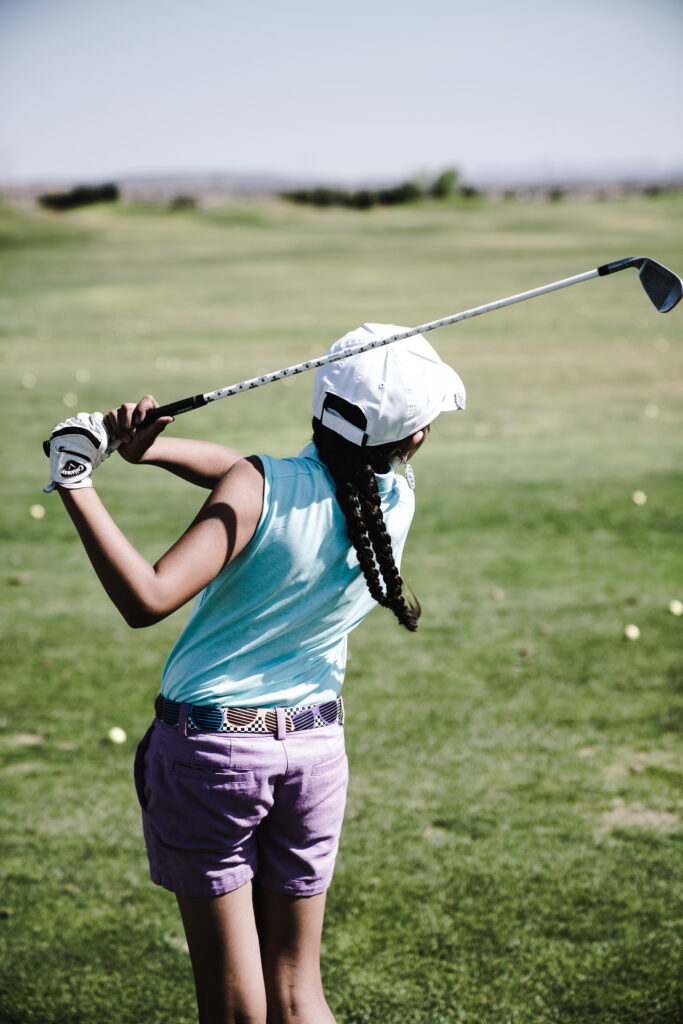
Simulating Different Tee Box Positions
During your practice sessions, simulate different tee box positions to expose yourself to a variety of challenges. Set up markers or use the existing tee box positions on the driving range to recreate the distances and angles you may encounter on the course. Start with the forward tee box and progressively move back to the middle and back tee boxes, practicing your club selection and shot execution accordingly. This simulation practice will give you firsthand experience in adapting to different tee box positions and improve your ability to select the right club for each scenario.
Evaluating the Results
After each practice session, take the time to evaluate your results. Assess the accuracy and consistency of your tee shots from different tee box positions. Consider the club selections you made and how they affected your success on each simulated hole. If you consistently struggle from certain tee box positions, identify patterns and areas for improvement. By evaluating your results, you can pinpoint strengths and weaknesses in your club selection skills and adjust your practice routine accordingly.
Adapting Strategy for Different Tee Box Positions
Adapting your strategy for different tee box positions is essential to optimize your performance on the course. By modifying your shot shape and trajectory, using course management techniques, and taking advantage of favorable tee box positions, you can navigate each hole with confidence and precision.
Modifying Shot Shape and Trajectory
In golf, shot shape and trajectory refer to the path and flight of the ball after impact. Modifying your shot shape and trajectory can help you navigate different tee box positions effectively. For example, if you’re facing a tight fairway with a hazard on the left, intentionally shaping your shot with a slight fade from right to left can help you avoid the danger and keep your ball in play. By adjusting your shot shape and trajectory based on the tee box position and the obstacles you face, you can increase your chances of hitting accurate and controlled tee shots.
Using Course Management Techniques
Course management techniques involve strategically planning your shots to minimize risk and maximize opportunities. When facing different tee box positions, utilizing course management techniques can help you avoid hazards and approach each hole strategically. This may involve choosing a safer target area to ensure a clear approach to the green, playing conservative shots to avoid trouble, or even opting for a lay-up strategy on longer holes. By analyzing the hole, identifying potential risks, and making calculated decisions based on your strengths and limitations, you can effectively manage the course and improve your overall score.
Taking Advantage of Favorable Tee Box Positions
When you encounter more favorable tee box positions, it’s essential to capitalize on the opportunity. Favorable tee box positions often provide a better angle to the fairway, a clearer path to the green, or even shorter distances to the target. By recognizing these advantages and adjusting your club selection and shot strategy accordingly, you can increase your chances of hitting accurate shots and setting up for a successful hole. It’s crucial to remain adaptable and make the most of these favorable tee box positions when they arise.
Improving Accuracy through Consistency
Consistency is the key to improving accuracy in golf. By developing a repeatable swing, focusing on alignment and posture, and maintaining mental composure, you can enhance your overall accuracy and increase your chances of hitting successful tee shots.
Developing a Repeatable Swing
To improve your accuracy, develop a repeatable swing that allows you to consistently strike the ball with precision. This involves maintaining a balanced and athletic stance, executing a smooth backswing and downswing, and making a solid impact with the ball. Working with a golf instructor or practicing with a swing aid can help you refine your technique and establish a repeatable swing that you can rely on from various tee box positions.
Focusing on Alignment and Posture
Alignment and posture are vital elements in achieving accurate tee shots. Proper alignment ensures that you are aiming at your desired target, while maintaining the correct posture promotes a consistent swing plane and ball contact. Before each tee shot, take a moment to align your body and clubface with the target line. Additionally, ensure your posture is balanced and athletic, with a slight knee flex and a relaxed grip. By focusing on alignment and posture, you can maintain a consistent swing and deliver the clubface accurately to the ball.
Maintaining Mental Composure
Golf is as much a mental game as it is a physical one. Maintaining mental composure and a positive mindset can greatly contribute to your accuracy on the course. Before each tee shot, take a deep breath, visualize your desired shot, and focus on executing your plan. Avoid getting distracted by past shots or potential hazards. Instead, stay in the present moment and trust in your ability to hit accurate tee shots.
Navigating Challenging Tee Box Positions
Challenging tee box positions can present unique opportunities for risk and reward. By identifying these opportunities, minimizing penalty shots, and utilizing lay-up strategies, you can navigate challenging tee box positions and make the most of each hole.
Identifying Risk-Reward Opportunities
Challenging tee box positions often come with high-risk, high-reward opportunities. By recognizing these opportunities, you can make calculated decisions that may result in significant gains or potential setbacks. For example, if you’re facing a short par-four with a narrow fairway lined with bunkers, a well-executed aggressive tee shot may give you a clear path to a short approach shot for a potential birdie. However, if the risk outweighs the potential reward, it may be wiser to play a more conservative tee shot and rely on your short game to secure a par. Identifying risk-reward opportunities and weighing the potential outcomes will allow you to navigate challenging tee box positions strategically.
Minimizing Penalty Shots
One of the keys to successful tee shots from challenging positions is minimizing penalty shots. Penalty shots, such as shots that find hazards, go out-of-bounds, or result in unplayable lies, can significantly impact your score and confidence. When facing challenging tee box positions, focus on hitting accurate and controlled shots that keep the ball in play. This may involve using a more consistent and reliable club, adjusting your shot strategy, or opting for a safer line of play. By minimizing penalty shots, you can mitigate potential setbacks and maintain momentum throughout the round.
Utilizing Lay-Up Strategies
In some cases, challenging tee box positions may require you to utilize lay-up strategies. A lay-up strategy involves deliberately hitting a tee shot that leaves you with a longer approach shot, but also avoids potential hazards or trouble areas. This strategy is often employed on longer par-four or par-five holes where reaching the green in one shot may be too risky or unrealistic. By opting for a lay-up tee shot, you can position yourself favorably for the next shot and increase your chances of hitting a successful approach to the green. Utilizing lay-up strategies when facing challenging tee box positions can help you navigate the hole strategically and minimize the potential for errors.
Conclusion
Adapting to different tee box positions and selecting the appropriate club for tee shots is essential to enhance your golf game. By understanding the determining factors for tee box positions, analyzing the course layout and hazards, assessing yardage and par, and considering your individual comfort zone, you can make informed decisions that optimize your chances of success. With practice, consistent club selection routines, simulations of different tee box positions, and the application of strategies tailored to the situation, you can improve your accuracy, navigate challenging tee positions, and achieve a more rewarding round of golf. Remember, the tee box is not just the starting point of the hole, but the foundation for a successful and enjoyable game.


